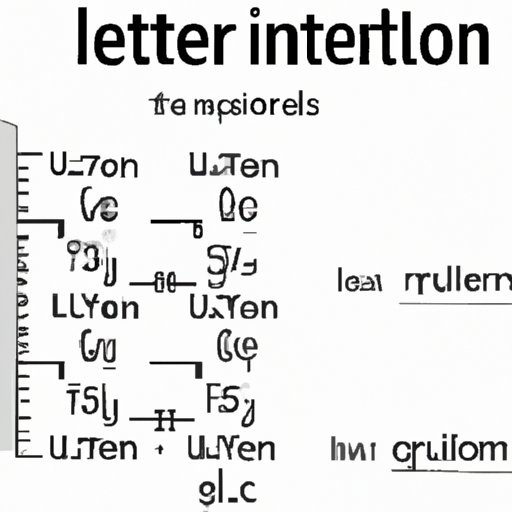Introduction
When it comes to measuring liquids, the two most commonly used units of measurement are liters and gallons. However, for some people, converting between these two units of measurement can be a bit confusing. In this article, we will provide a comprehensive guide to help you understand how many liters equal a gallon and how to accurately convert between these measurements.
Understanding Volume Measurement: Liters vs. Gallons
Before we dive into the conversion process, let’s define what liters and gallons are, and highlight the key differences between them.
A liter is a metric unit of volume measurement that is equal to 1,000 cubic centimeters. It is often used in the fields of science, medicine, and automotive engineering, among others. In contrast, a gallon is an imperial unit of volume measurement that is commonly used in the United States, United Kingdom, and Canada.
One US gallon is equivalent to 3.785 liters, while one UK gallon is equal to 4.546 liters. This means that there is a significant difference in the amount of liquid that a gallon can hold depending on where in the world it is being used.
Quick & Easy: How to Convert Gallons to Liters and Vice Versa
Converting between gallons and liters is relatively straightforward, and there are a few simple formulas that you can use to make the calculation.
To convert gallons to liters, multiply the number of gallons by 3.785 (or 4.546 for UK gallons). For example, if you have 2 gallons of water, you would multiply that number by 3.785, which would give you 7.57 liters.
Conversely, to convert liters to gallons, divide the number of liters by 3.785 (or 4.546 for UK gallons). For example, if you have 10 liters of gasoline, you would divide that number by 3.785, which would give you 2.64 gallons.
Metric vs. Imperial: The Debate Over Gallons and Liters
The use of gallons and liters is tied to the larger debate over the metric and imperial systems of measurement. The metric system, which is also known as the International System of Units (SI), is a decimal-based system used throughout most of the world. The imperial system, on the other hand, is an older system of measurement that is primarily used in the United States and a few other countries.
Proponents of the metric system argue that it is more logical and easier to use because it relies on a base 10 system, whereas the imperial system can be more cumbersome due to its reliance on fractions and conversions between units. However, others argue that the imperial system is more intuitive because it is more familiar to the people who grew up with it.
Common Uses for Gallons and Liters in Everyday Life
There are many products and items that are measured using liters or gallons, and each measurement is used for different purposes. For example, liters are commonly used in the automotive industry to measure the volume of engine oil, transmission fluid, and coolant. Gallons, on the other hand, are often used in the food and beverage industry to measure the volume of ingredients used in cooking or brewing.
Other common uses for liters and gallons include measuring the volume of gasoline in a car’s fuel tank, measuring the amount of water used in household tasks such as watering plants or washing clothes, and determining the volume of chemicals used in industrial settings.
Conclusion
In conclusion, understanding how many liters equal a gallon and how to convert between these measurements is an essential skill that can come in handy in many different settings. Whether you’re trying to measure out ingredients for a recipe or determining the amount of fuel you need to put in your car’s gas tank, being able to confidently convert between liters and gallons is an important skill to have. By following the steps outlined in this article, you should now be well on your way to mastering this conversion process, and using it whenever you need to.
